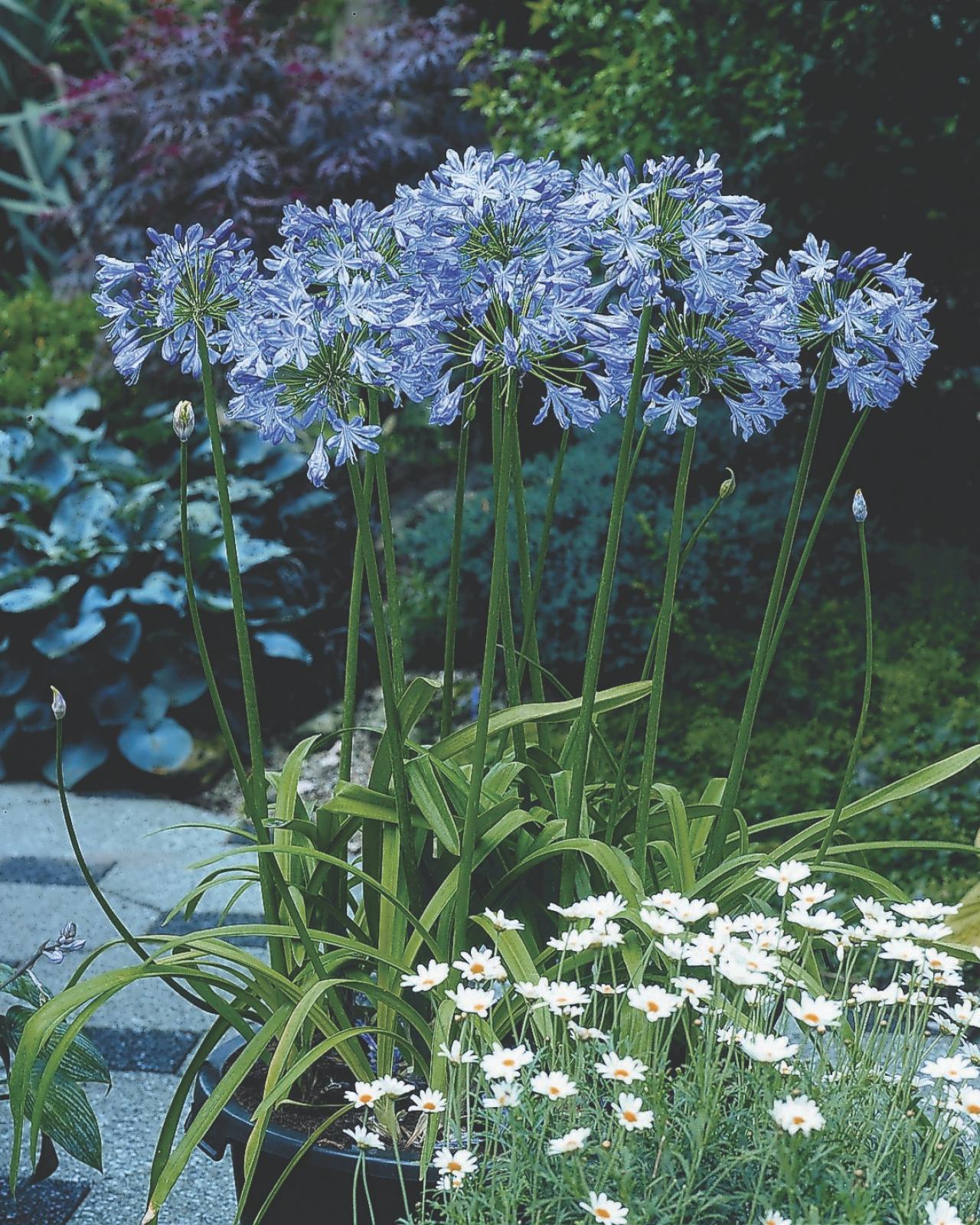Seasonal Agapanthus Treatment: Preparing for Wintertime and Summer season
Wiki Article
Understanding the Art of Agapanthus Treatment: Necessary Actions for Healthy And Balanced Development and Lively Flowers
In the world of cultivation, the growing of agapanthus stands as a rewarding endeavor for those who seek to support these classy blooming plants. With their striking blossoms and elegant vegetation, agapanthus has captured the interest of gardeners worldwide. Nevertheless, achieving optimal growth and vibrant blossoms calls for a nuanced method that encompasses different crucial steps. From picking the appropriate range to mastering pruning techniques, the journey towards growing thriving agapanthus plants is diverse and holds the essential to opening the complete possibility of these botanical gems.
Picking the Right Agapanthus Selection

When choosing the ideal Agapanthus range for your garden, consider elements such as climate suitability, flower color, and development behavior. Additionally, consider the environment in your area to make certain the Agapanthus range you select can flourish in your certain conditions. Understanding the development habit of various Agapanthus ranges is essential for correct placement within your yard.
Ideal Planting Problems
Thinking about the optimal ecological demands is essential for effective Agapanthus farming. Agapanthus grows in well-draining soil with a somewhat acidic to neutral pH level. When growing, pick a location that gets complete sunlight to partial shade. In hotter environments, providing some mid-day color can prevent scorching of the fallen leaves. Agapanthus plants are delicate to cold temperatures and ought to be shielded from frost throughout winter months.To make certain healthy and balanced growth and vivid blossoms, plant Agapanthus bulbs at a deepness of concerning 2-4 inches and space them 8-12 inches apart. Adding raw material, such as garden compost, to the soil can improve drain and fertility, promoting robust root growth. Mulching around the base of the plants helps keep wetness and subdues weed growth. Routine watering is important, specifically throughout the expanding season, to keep the soil continually wet however not soaked.
Watering and Fertilizing Tips
Preserving correct moisture levels and offering vital nutrients are crucial aspects in the treatment routine for Agapanthus plants. When it involves sprinkling Agapanthus, it is critical to strike a balance. If overwatered, these plants like continually moist soil however are susceptible to root rot. Throughout the expanding period, water deeply as soon as a week, making certain the dirt is well-draining to avoid waterlogging. In hotter climates or during periods of dry spell, even more regular watering may be needed to maintain the dirt equally wet. However, lower watering in the winter to stop waterlogged conditions.Fertilizing Agapanthus is essential for advertising healthy and balanced growth and prolific blossoms. Apply a well balanced fertilizer, such as a 10-10-10 formula, in the very early spring as brand-new growth arises. Repeat this application every 6-8 weeks throughout the expanding season. Avoid too much fertilization, as it can result in rich vegetation at the expenditure of blooms. Always comply with check my site the maker's directions for proper dilution and application techniques. By following these watering and feeding ideas, you can ensure your Agapanthus plants prosper and generate vibrant, durable blooms.
Pruning Techniques for Agapanthus
Trimming Agapanthus plants at the ideal times and with proper strategies is crucial for keeping their health and advertising ideal growth and blooming. The ideal time to prune Agapanthus is in late winter season or early springtime prior to new growth arises.For flowered stems, wait till the blooms have perished and after that cut them back to the base. This not only cleans the plant's appearance however also encourages the advancement of new flower buds. Deadheading invested blossoms can additionally reroute the plant's energy right into generating more blooms as opposed to establishing seeds. However, if you want to accumulate seeds for proliferation, leave some blossoms to dry and fully grown on the plant.
Remember to use tidy, sharp devices to make exact cuts and lower you could look here the threat of introducing diseases. Agapanthus. Regular trimming will aid maintain your Agapanthus looking healthy and neat while making sure an abundant screen of lovely blossoms
Managing Common Pests and Diseases
After guaranteeing correct pruning strategies for Agapanthus, it is crucial to deal with usual pests and diseases that can impact the wellness and vitality of these plants. One common bug that impacts Agapanthus is the Agapanthus gall midget.Another typical concern is fungal leaf place, which offers as dark sores on the leaves. To protect against fungal illness, make sure excellent air circulation around the plants, avoid overhead watering, and eliminate any kind of contaminated leaves promptly. In addition, Agapanthus plants can deal with origin rot if they are planted in badly draining pipes dirt. To stop this, plant Agapanthus in well-draining dirt and stay clear of overwatering. By being attentive and taking punctual activity against illness and pests, you can aid your Agapanthus plants grow and create vivid blossoms.

Verdict
To conclude, grasping the art of agapanthus care involves picking the ideal variety, offering perfect growing problems, appropriate watering and fertilizing, ideal trimming methods, and attending to usual bugs and conditions. By complying with these crucial steps, you can guarantee healthy development and vibrant blossoms for your article source agapanthus plants. Bear in mind to regularly check and keep your plants to advertise their overall wellness and long life.To ensure healthy growth and lively blossoms, plant Agapanthus light bulbs at a depth of regarding 2-4 inches and area them 8-12 inches apart. By complying with these watering and fertilizing pointers, you can guarantee your Agapanthus plants thrive and generate vibrant, durable blooms.
One common bug that affects Agapanthus is the Agapanthus gall midge. Furthermore, Agapanthus plants can endure from root rot if they are grown in inadequately draining dirt. By following these vital steps, you can make sure healthy and balanced development and vivid blooms for your agapanthus plants.
Report this wiki page